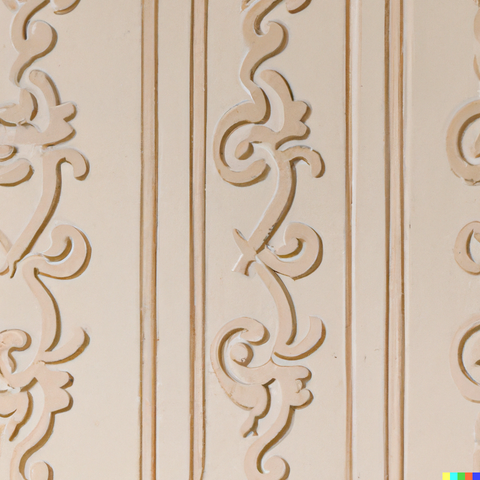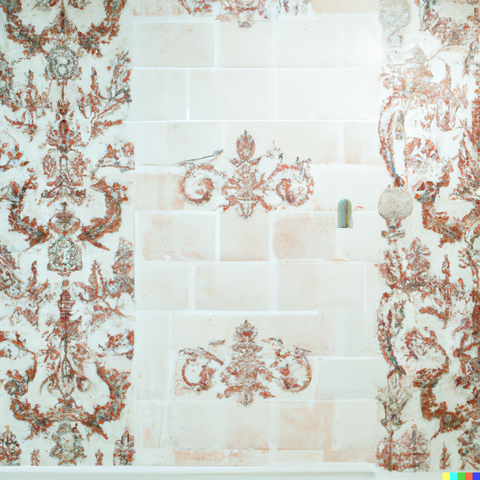History of Vintage Wallpaper Patterns
The history of vintage wallpaper patterns is a fascinating journey that spans centuries of artistic and cultural development. From early hand-painted designs to the advent of mass production, these patterns have captured the essence of their respective eras while leaving a lasting impact on interior design trends throughout history. In this article, we will trace the evolution of vintage wallpaper patterns, exploring their origins, popular styles, and enduring influence.

Origins and Early Beginnings:
The use of wallpaper dates back to ancient civilizations, with evidence of its existence found in Egyptian tombs from as early as 2000 BCE. However, it wasn't until the 16th century that wallpaper patterns began to emerge as a form of decorative art. European artisans and craftsmen began hand-painting elaborate designs on rolls of paper, often featuring floral motifs, architectural elements, and mythological scenes.
During the Renaissance, wallpaper patterns became increasingly popular, adorning the walls of wealthy noble houses and palaces. Italy, France, and England were at the forefront of this trend, with designs influenced by the artistic movements of the time, such as the ornate motifs of the Baroque and the elegant arabesques of the Rococo.

The Industrial Revolution and Mass Production:
The 18th century marked a significant shift in the production of wallpaper patterns. With the advent of the Industrial Revolution, the manufacturing process of wallpaper became more streamlined, allowing for mass production. Instead of hand-painting each roll, wallpapers were now printed using woodblocks or engraved copper plates, producing faster and more affordable designs.
One of the pioneers of this new technique was Jean-Baptiste Réveillon, a French wallpaper manufacturer who introduced the first large-scale production of wallpaper in 1753. His intricate designs were heavily influenced by the neoclassical style, featuring motifs inspired by ancient Greece and Rome.

The Victorian Era and Exotic Influences:
The 19th century was a golden age for wallpaper design, with the Victorian era witnessing a surge in interest and demand. During this time, wallpaper patterns evolved to reflect the changing tastes of society, embracing a variety of styles and influences. Influenced by the British Empire's colonial expansion, exotic motifs from Asia, the Middle East, and Africa became increasingly popular.
Orientalist designs, featuring intricate patterns and scenic landscapes, were particularly sought after. The Aesthetic Movement, championed by designers such as William Morris, emphasized the use of natural elements, such as plants and birds, in wallpaper patterns, prioritizing simplicity and harmony.

Art Nouveau and the Modern Movement:
The turn of the 20th century saw the rise of Art Nouveau, a decorative style characterized by flowing lines, organic forms, and asymmetrical compositions. Wallpaper patterns of this period showcased curvilinear motifs, inspired by nature and the human form. Artists like Alphonse Mucha and Gustav Klimt contributed to the popularity of Art Nouveau, with their intricate and sensuous designs gracing the walls of both private homes and public spaces.
However, as the 20th century progressed, the modernist movement emerged, advocating for a shift towards simple, functional, and geometric designs. Wallpaper patterns became more streamlined, featuring bold and abstract shapes, often in striking color palettes. The Bauhaus school, led by influential designers such as Walter Gropius and Marcel Breuer, played a significant role in promoting this minimalist aesthetic.

Revival and Contemporary Trends:
In recent years, there has been a resurgence of interest in vintage wallpaper patterns, as homeowners and interior designers seek to incorporate nostalgic elements into their spaces. The popularity of mid-century modern aesthetics, with its clean lines and retro vibe, has led to the revival of patterns from the 1950s and 1960s. Bold geometric shapes, vibrant colors, and atomic motifs are characteristic of this era.
Furthermore, vintage wallpaper patterns from the Art Deco period, with their striking symmetry and glamorous motifs, have also regained popularity. The allure of the Roaring Twenties and the Gatsby era has inspired homeowners to recreate the opulence and elegance of this bygone era through their wallpaper choices.

The history of vintage wallpaper patterns is a testament to the evolving tastes and styles of different eras. From the labor-intensive hand-painted designs of the Renaissance to the mass-produced prints of the Industrial Revolution, these patterns have reflected the cultural, artistic, and technological advancements throughout history. Whether it's the romantic chinoiserie of the Victorian era or the streamlined geometry of the modernist movement, vintage wallpaper patterns continue to captivate and inspire us today, bridging the gap between the past and the present in timeless beauty.




Leave a comment